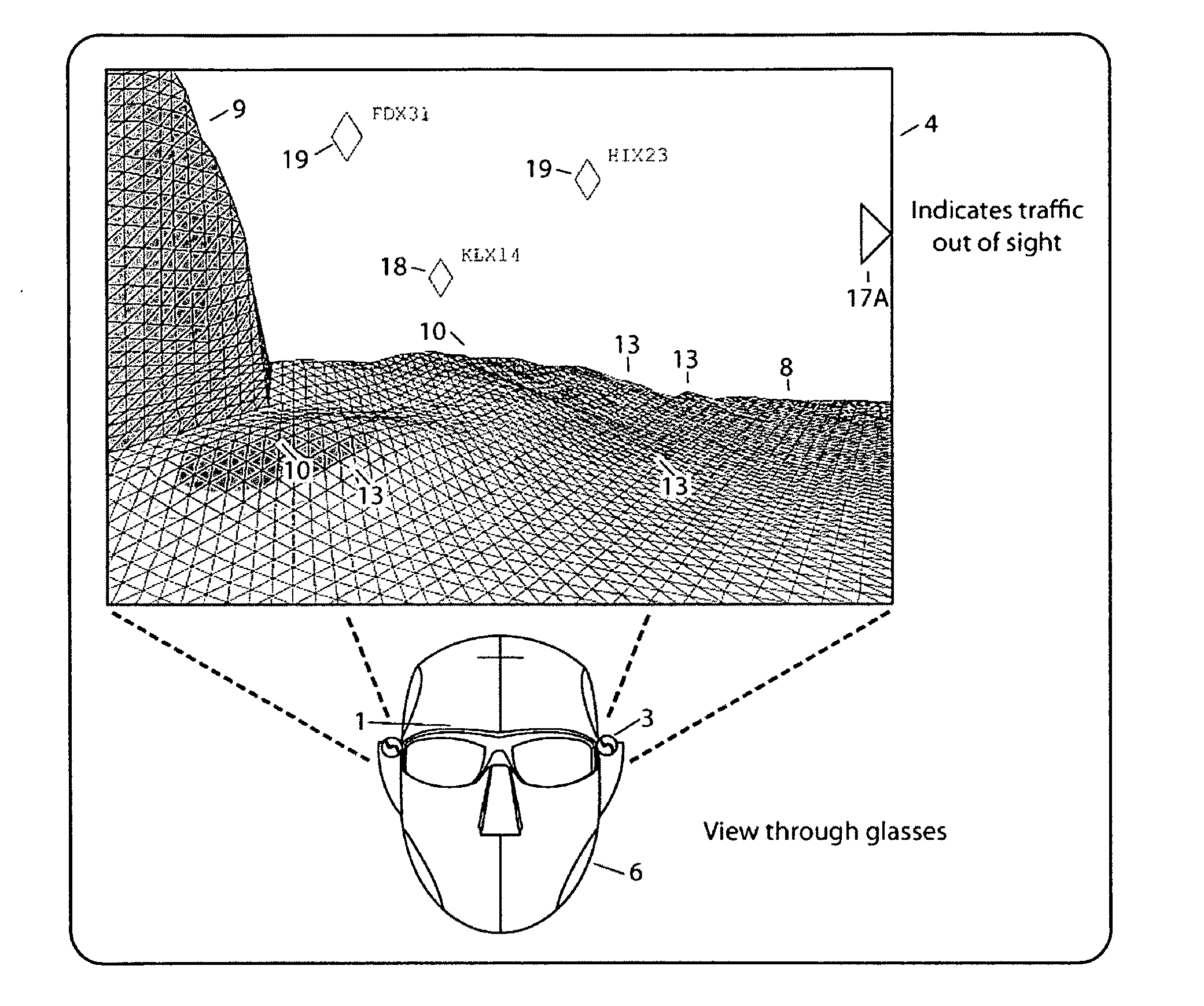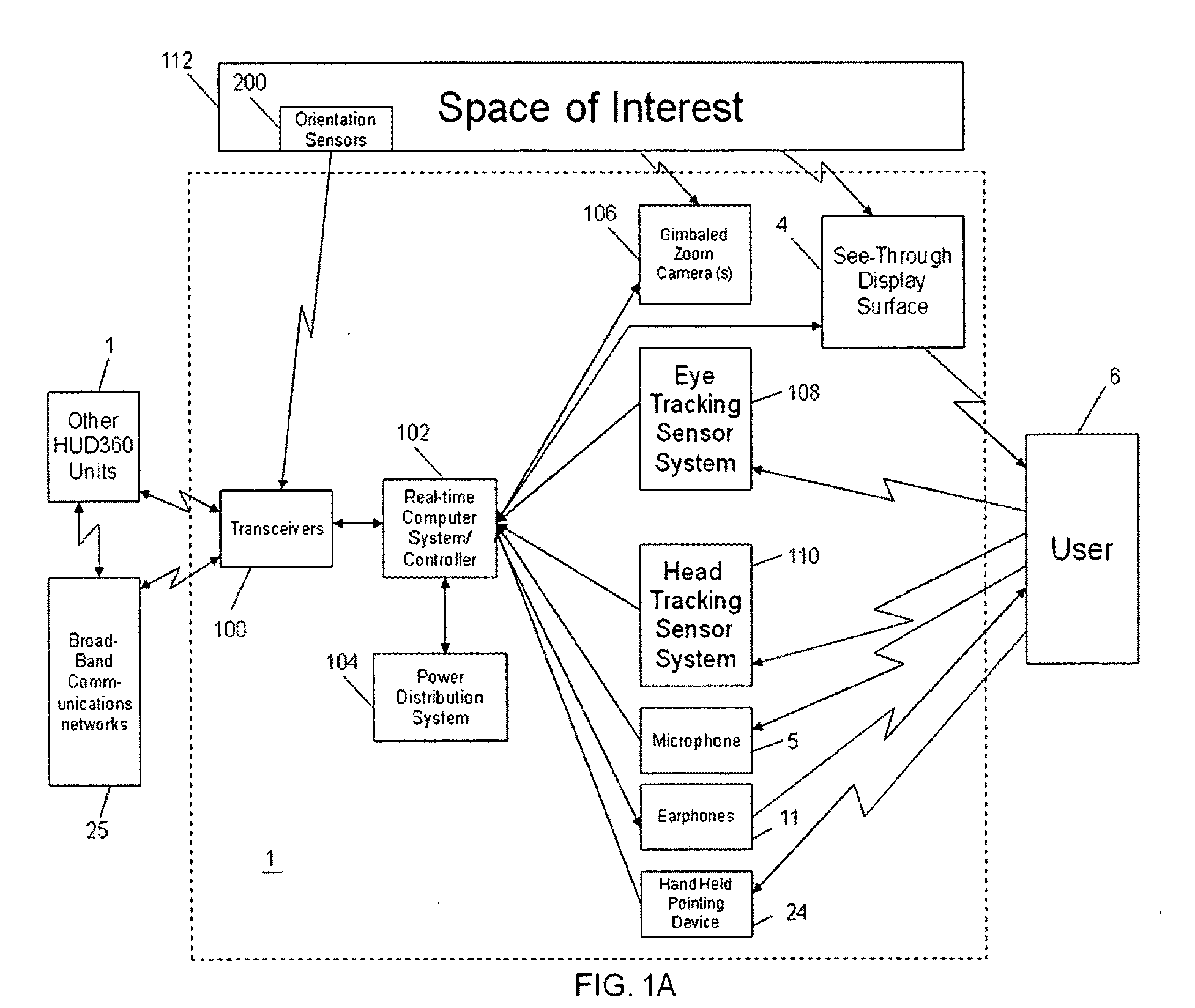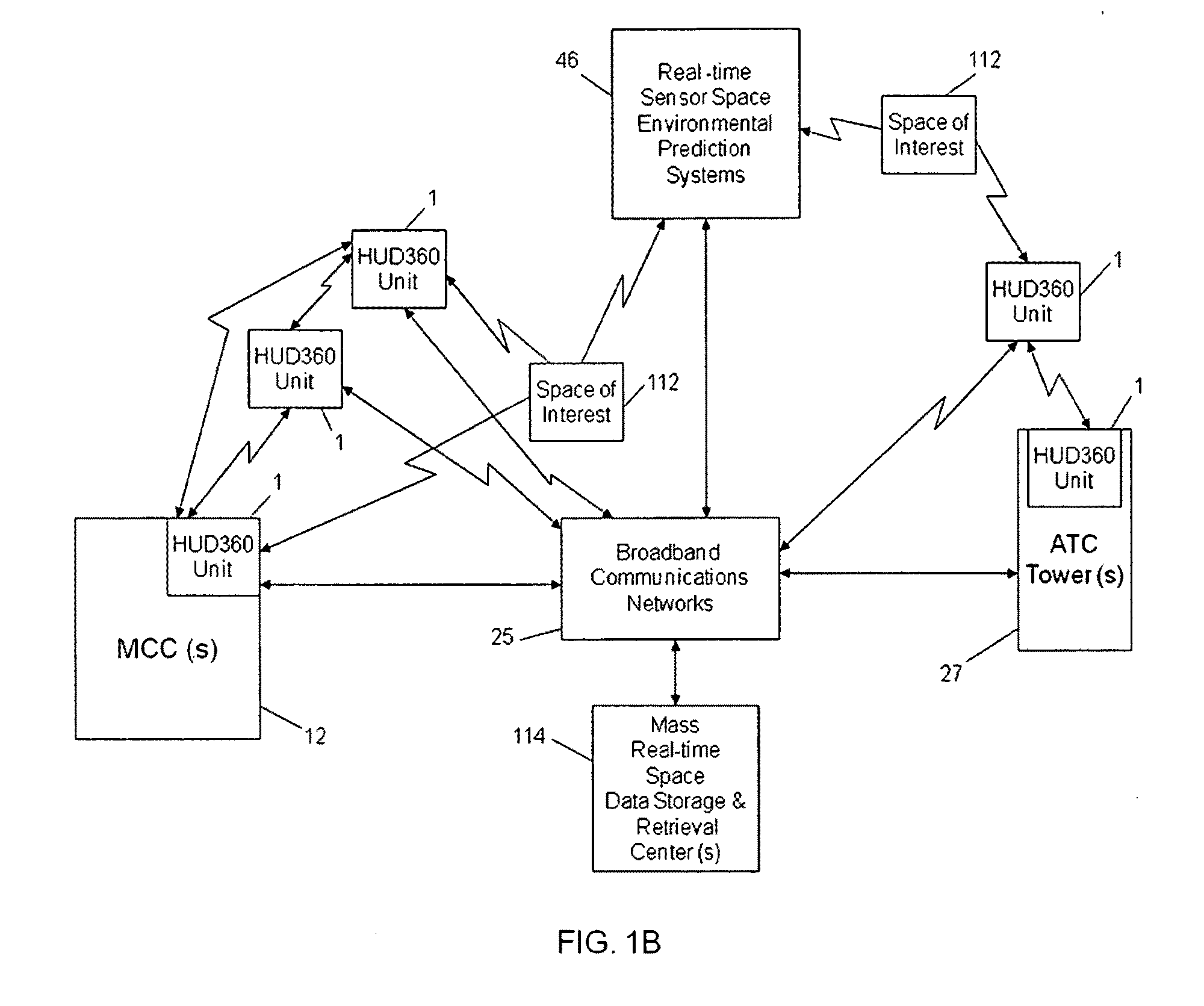Computer-aided system for 360º heads up display of safety/mission critical data
a technology of safety/mission critical data and computer-aided systems, applied in the field of aviation, can solve the problems of many critical perceptual limitations of humans piloting aircraft or other vehicles, affecting the perception of doctors and medical technicians, and not knowing, and achieve the effect of optimal assessmen
- Summary
- Abstract
- Description
- Claims
- Application Information
AI Technical Summary
Benefits of technology
Problems solved by technology
Method used
Image
Examples
Embodiment Construction
[0069]A functional system block diagram of a HUD360 1 system with see-through display surface 4 viewed by a user 6 of a space of interest 112 is shown in FIG. 1A. In some applications, the HUD360 1 see-through display surface 4 can be set in an opaque mode where the entire display surface 4 has only augmented display data where no external light is allowed to propagate through display surface 4. The HUD360 1 display system is not limited to just a head mounted display or a fixed heads-up-display (HUD), but can be as simple as part of a pair of spectacles or glasses, an integrated hand-held device like a cell phone, Personal Digital Assistant (PDA), or periscope-like device, or a stereoscopic rigid or flexible microscopic probe with a micro-gimbaled head or tip (dual stereo camera system for dept perception), or a flexibly mounted device all with orientation tracking sensors in the device itself for keeping track of the devices orientation and then displaying augmentation accordingly...
PUM
 Login to View More
Login to View More Abstract
Description
Claims
Application Information
 Login to View More
Login to View More - R&D
- Intellectual Property
- Life Sciences
- Materials
- Tech Scout
- Unparalleled Data Quality
- Higher Quality Content
- 60% Fewer Hallucinations
Browse by: Latest US Patents, China's latest patents, Technical Efficacy Thesaurus, Application Domain, Technology Topic, Popular Technical Reports.
© 2025 PatSnap. All rights reserved.Legal|Privacy policy|Modern Slavery Act Transparency Statement|Sitemap|About US| Contact US: help@patsnap.com



